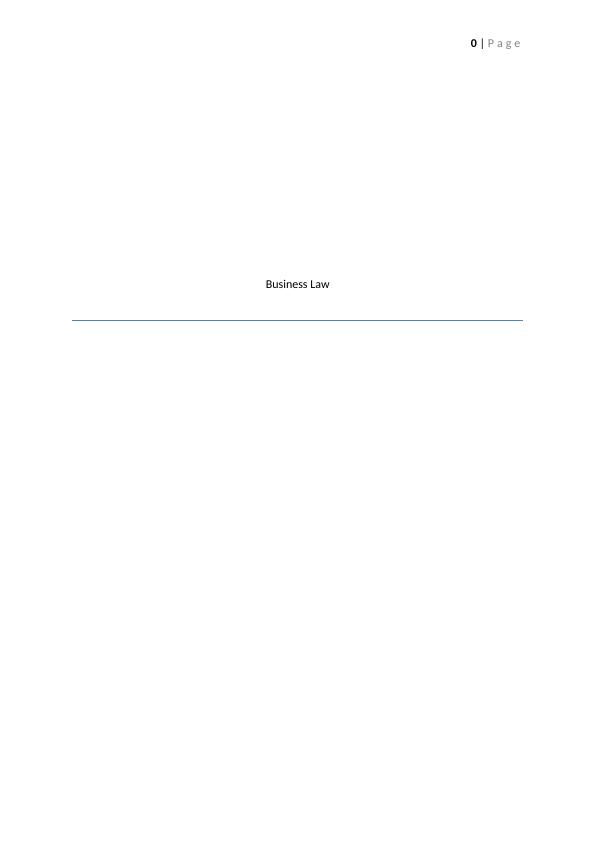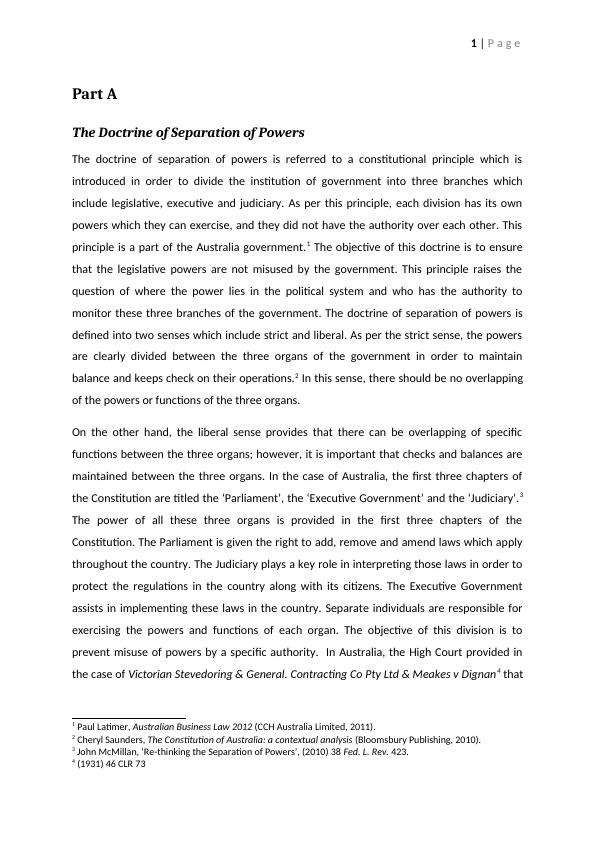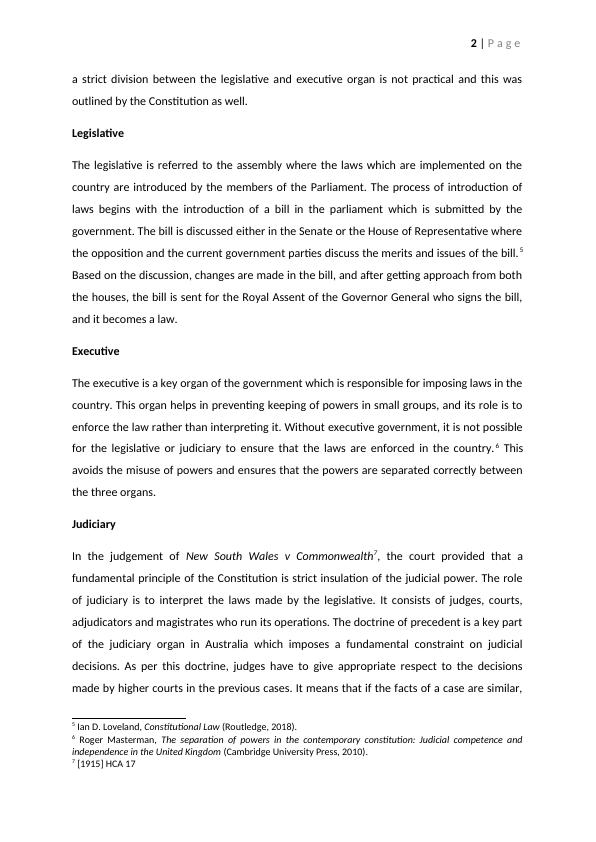Doctrine of Separation of Powers in Business Law
10 Pages3091 Words329 Views
Added on 2023-04-20
About This Document
This article discusses the doctrine of separation of powers in business law and its significance in maintaining a balance of power in the government. It explores the roles of legislative, executive, and judiciary organs in Australia and explains the principles of strict and liberal sense of separation of powers. The article also highlights how this doctrine prevents the misuse of powers and ensures responsible governance.
Doctrine of Separation of Powers in Business Law
Added on 2023-04-20
ShareRelated Documents
End of preview
Want to access all the pages? Upload your documents or become a member.
Understanding the Doctrine of Separation of Powers in Australian Constitution
|13
|3064
|490
Doctrine of Separation of Powers in Australia and Validity of Contracts
|11
|2629
|346
Understanding the Doctrine of Separation of Powers in Australia and Contract Law
|14
|3282
|470
Australian Constitutional Law
|6
|1474
|71
Corporation and Business Law
|9
|2517
|470
Separation of Powers in Australia: Extent and Sufficiency
|22
|6837
|231



